Lucid Flight: Android App for Lucid Dreaming
Lucid Dreaming App for Android
![]()
Flying after ‘waking up’ is a quintessential lucid dream experience
Lucid Flight: Android app using physiological signals to detect REM sleep and provide customizable cues for achieving lucidity while dreaming.
The Science
Lucid Dreaming
Lucid dreaming = realizing you’re dreaming while dreaming.
“Dreaming can be viewed as the special case of perception without the constraints of external sensory input.” — Stephen LaBerge
Why it matters: We sleep ~⅓ of our lives. Consciousness during sleep enriches waking life, enables creativity, problem-solving, and self-exploration.
REM Detection via Heart Rate
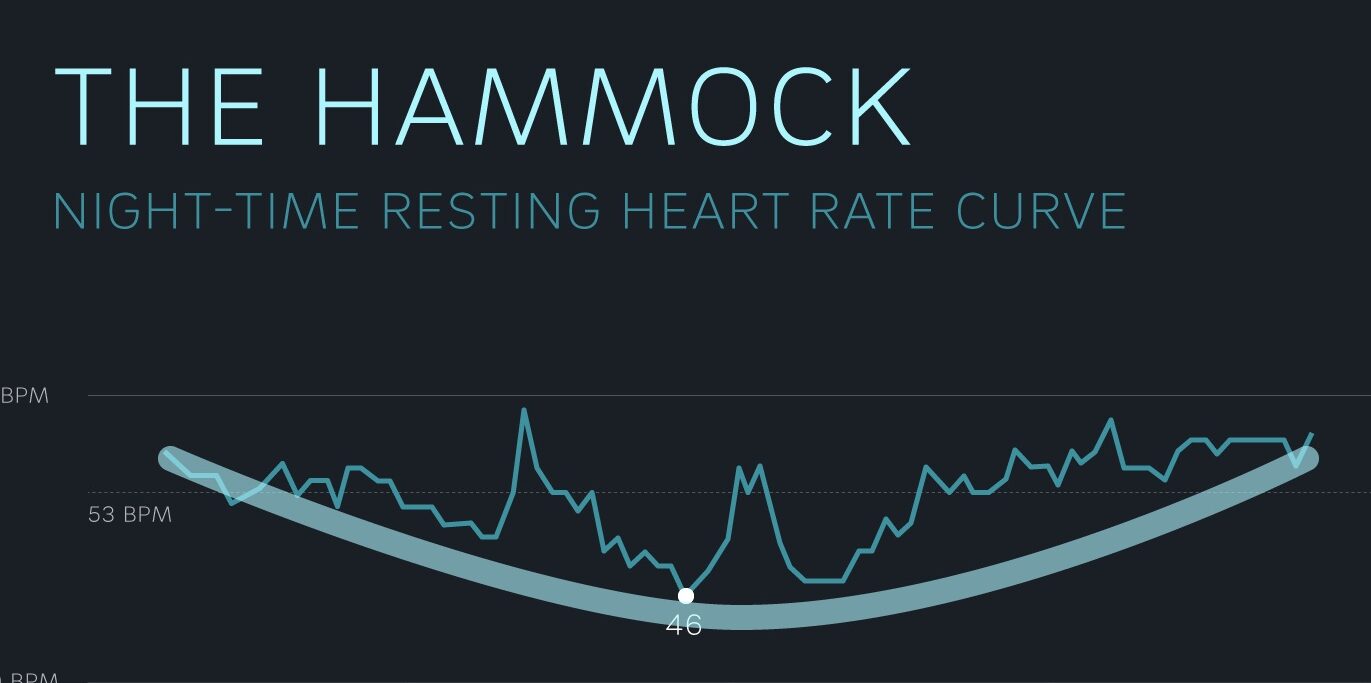
Heart rate variations during sleep cycles
Key insight: Overall heart rate tends to drop in NREM sleep and become higher and more variable in REM. Sudden changes in heart rate and HRV often correlate with REM periods, especially when combined with movement data.
Traditional methods: EEG (brain waves - expensive, invasive) • EOG (eye tracking - specialized hardware)
Lucid Flight advantage: Monitor REM using fitness tracker you already own.
Technical Approach
Google Fit Integration
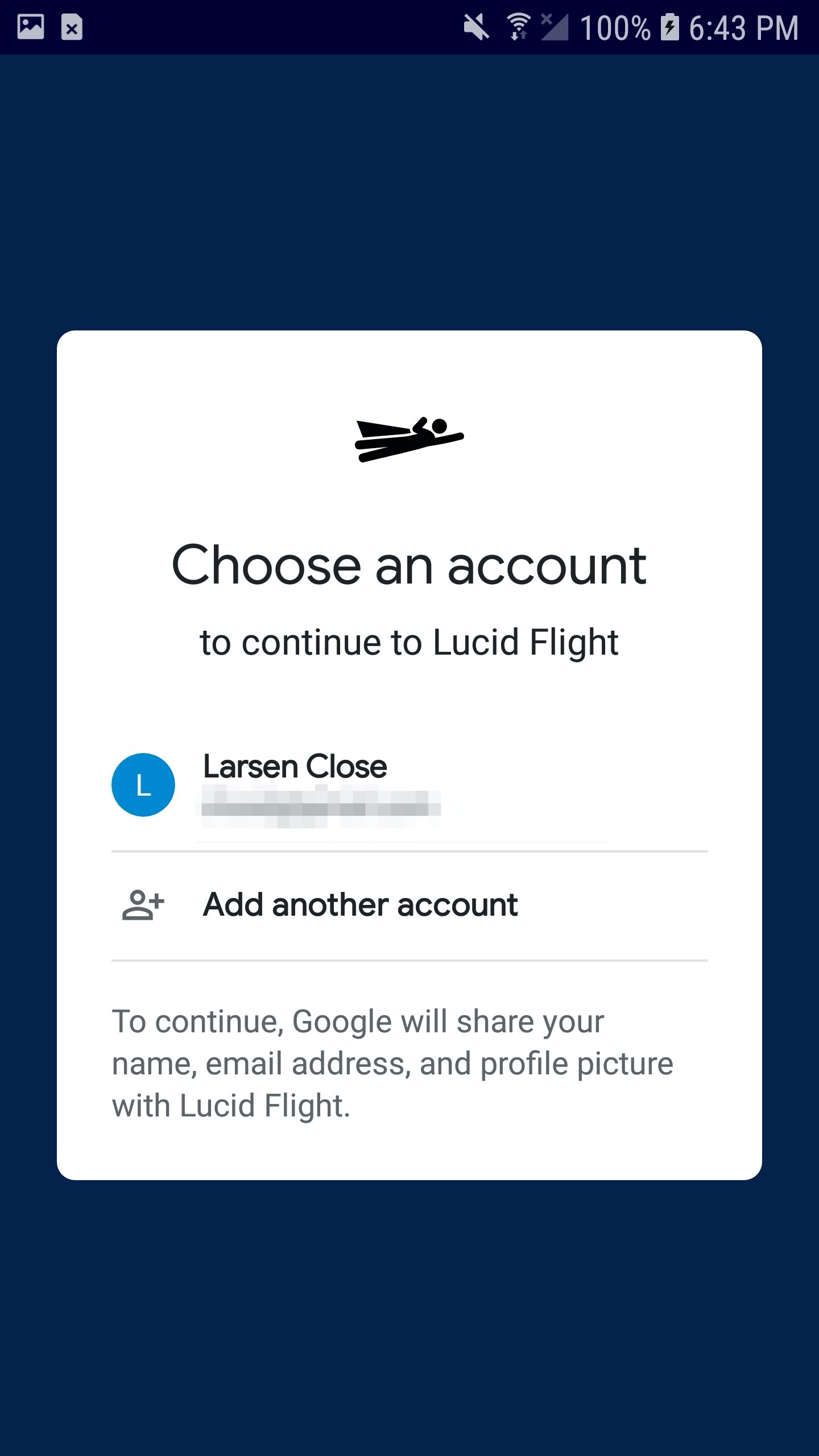
Integrates with Google Fit APIs for continuous heart rate monitoring from Wear OS smartwatches (and periodically synced data from other devices that integrate with Google Fit, like Fitbit or Garmin).
Benefits: Non-invasive • Continuous data throughout sleep • Cost-effective (no $200+ specialized hardware)
REM Detection Algorithm
// Simplified algorithm
fun detectREM(heartRateData: List<Int>): Boolean {
val baseline = heartRateData.average()
val currentSpike = heartRateData.last() - baseline
return currentSpike > THRESHOLD &&
isWithinREMWindow(currentTime)
}Monitors for heart rate spikes above baseline, timing patterns consistent with REM cycles, and configurable sensitivity.
Features
Main Interface
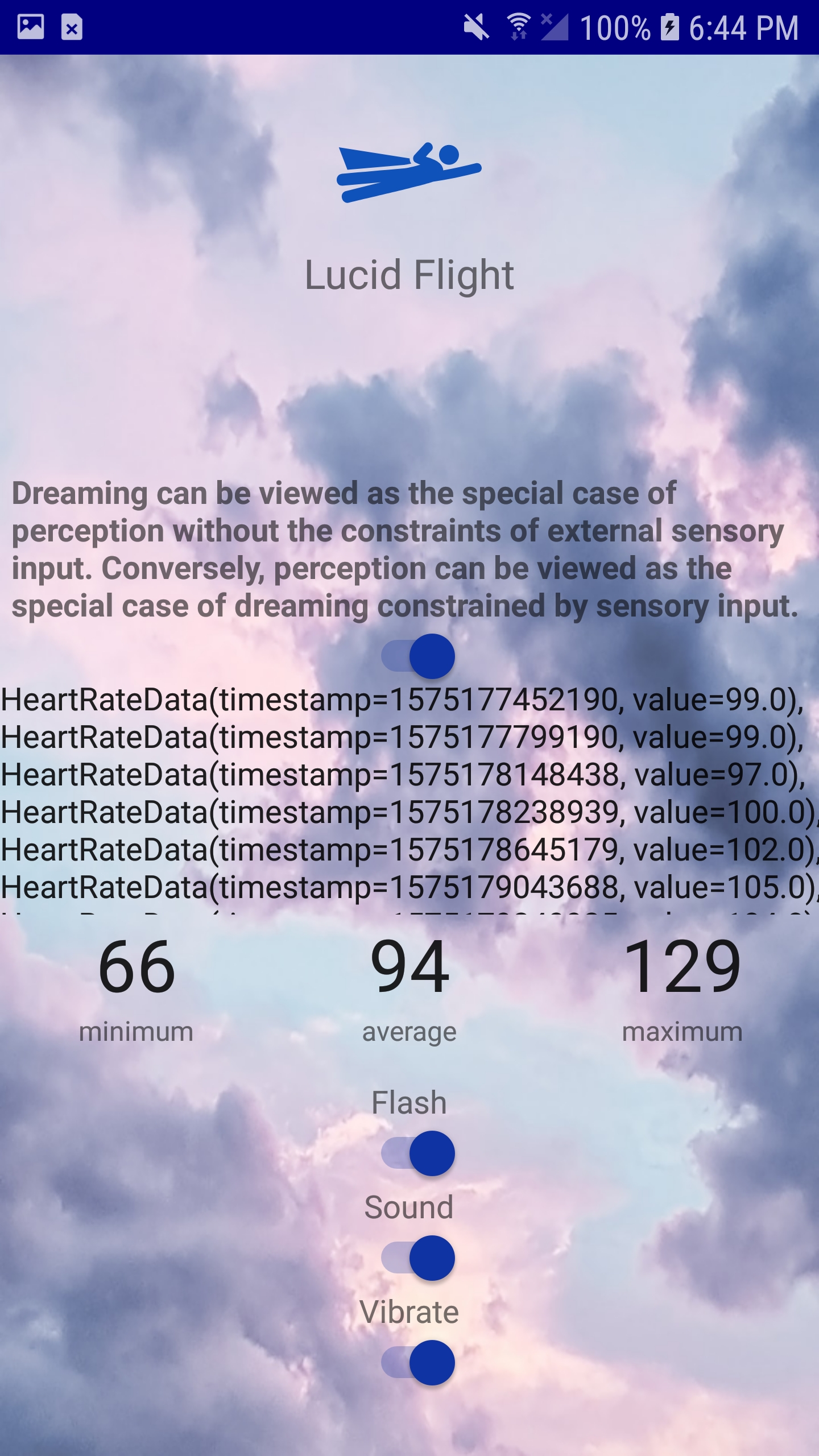
Real-time monitoring: Scrolling heart rate graph • Statistical analysis (min, mean, max) • Dream detection toggle
Customizable cues: Visual (flashlight/screen strobing) • Audio (custom recordings or default tones) • Haptic (vibration patterns)
Finding the Balance
Cues must be noticeable enough to recognize in dream, yet subtle enough not to cause full awakening.
Example: Flashlight on face might manifest as oncoming train in dream (noticed but not fully waking).
Custom Audio Cues
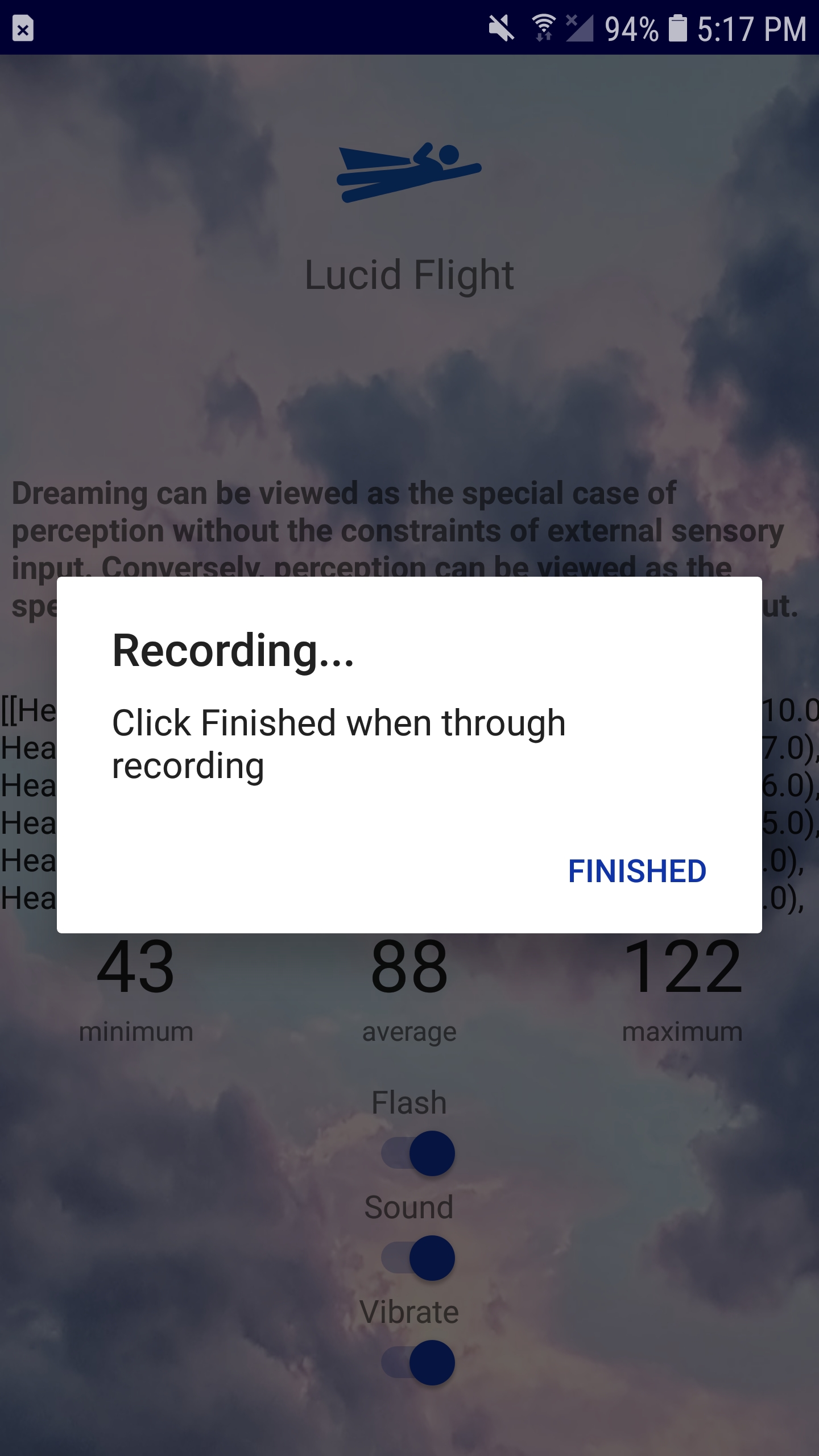
Record personalized messages: “You are dreaming” • Reality check triggers • Binaural beats • Personal cues that work for you
Alarm Configuration
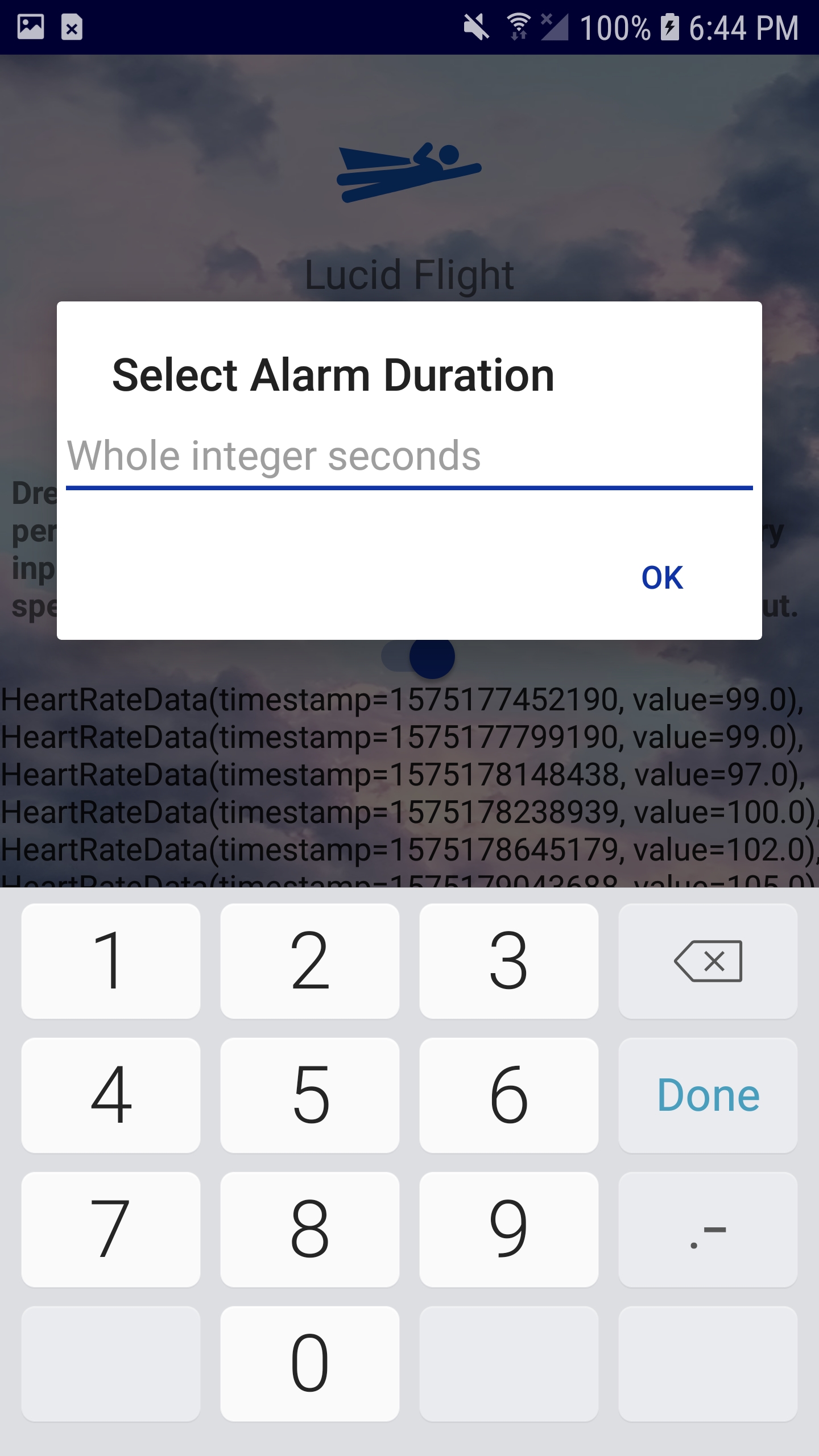
Adjustable duration • Preview mode for testing • Multiple simultaneous cues (audio + visual + haptic)
Design Philosophy
Accessibility Over Gatekeeping
Lucid dreaming device market problems: Failed Kickstarters (never shipped) • $200+ price points • Proprietary hardware collecting dust
Lucid Flight approach: Use devices you already own.
Motivation-Driven Design
Research shows: Motivation to learn is the strongest predictor of lucid dreaming success.
App supports this through inspirational messages, progress tracking, and customization encouraging experimentation.
Technical Stack
Stack: Kotlin • Android • Google Fit API • Wear OS integration
Architecture: Background service for continuous monitoring • Multi-modal alert system • Battery-optimized sensor polling
Challenges solved: Maintaining sensor connection during sleep • Balancing sensitivity vs false positives • Creating noticeable-but-not-waking cues • All-night battery optimization
Why This Matters
Lucid dreaming is hard: Recognizing you’re dreaming while dreaming requires training.
Hardware/software assistance accelerates learning by:
- Reliably detecting REM (when dreams are vivid)
- Providing consistent cues (become recognizable in dreams)
- Lowering barrier to experimentation
Result: Intersection of neuroscience, mobile development, and human potential - using technology to expand the boundaries of consciousness.
Project Status
Current: Functional proof-of-concept for REM detection using consumer hardware
Future development: iOS version (Swift) • Refined REM algorithms • Machine learning for personalized prediction • App store release
Try Lucid Dreaming
Prerequisites: Android phone • Fitness tracker with heart rate monitor • Google Fit integration
Alternative approaches (no app needed):
- Reality checks: Ask “am I dreaming?” throughout day
- Dream journal: Write dreams immediately on waking
- MILD technique: “I will realize I’m dreaming” before sleep
- WBTB: Wake after 5 hours, stay awake 20 min, return to sleep
Best results: Combine technology with practice.
One-third of your life is spent asleep. What if you could be conscious for it? Lucid Flight represents one approach to that question - leveraging existing technology to explore the boundaries between waking and dreaming.